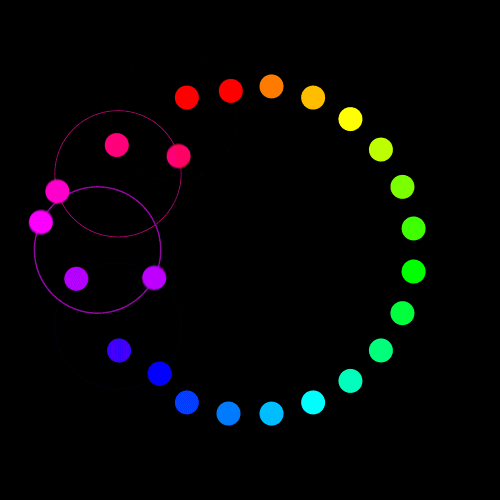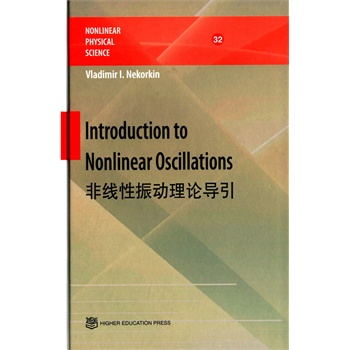简介
目录
Preface
1 Introduction to the Theory of Oscillations
1.1 General Features of the Theory of Oscillations
1.2 Dynamical Systems
1.2.1 Types of Trajectories
1.2.2 Dynamical Systems with Continuous Time
1.2.3 Dynamical Systems with Discrete Time
1.2.4 Dissipative Dynamical Systems
1.3 Attractors
1.4 Structural Stability of Dynamical Systems
1.5 Control Questions and Exercises
2 One—Dimensional Dynamics
2.1 Qualitative Approach
2.2 Rough Equilibria
2.3 Bifurcations of Equilibria
2.3.1 Saddle—node Bifurcation
2.3.2 The Concept of the Normal Form
2.3.3 Transcritical Bifurcation
2.3.4 Pitchfork Bifurcation
2.4 Systems on the Circle
2.5 Control Questions and Exercises
3 Stability of Equilibria.A Classification of Equilibria of Two—Dimensional Linear Systems
3.1 Definition of the Stability of Equilibria
3.2 Classification of Equilibria of Linear Systems on the Plane
3.2.1 Real Roots
3.2.1.1 Roots λ1 and λ2 of the Same Sign
3.2.1.2 The Roots λ1 and λ2 with Different Signs
3.2.1.3 The Roots λ1 and λ2 are Multiples of λ1=λ2=λ
3.2.2 Complex Roots
3.2.3 Oscillations of two—dimensionallinear systems
3.2.4 Two—parameter Bifurcation Diagram
3.3 Control Questions and Exercises
4 Analysis of the Stability of Equilibria of Multidimensional Nonlinear Systems
4.1 Linearization Method
4.2 The Routh—Hurwitz Stability Criterion
4.3 The Second Lyapunov Method
4.4 Hyperbolic Equilibria of Three—Dimensional Systems
4.4.1 Real Roots
4.4.1.1 Roots λi of One Sign
4.4.1.2 Roots λi of Different Signs
4.4.2 Complex Roots
4.4.2.1 Real Parts of the Roots λi of One Sign
4.4.2.2 Real Parts of Roots λi of Different Signs
4.4.3 The Equilibria of Ihree—Dimensional Nonlinear Systems
4.4.4 Two—Parameter Bifurcation Diagram
4.5 Control Questions and Exercises
5 Linear and Nonlinear Oscillators
5.1 The Dynamics of a Linear Oscillator
5.1.1 Harmonic Oscillator
5.1.2 Linear Oscillator with Losses
5.1.3 Linear Oscillator with "Negative" Damping
5.2 Dynamics of a Nonlinear Oscillator
5.2.1 Conservative Nonlinear Oscillator
5.2.2 Nonlinear Oscillator with Dissipation
5.3 Control Questions and Exercises
6 Basic Properties of Maps
6.1 Point Maps as Models of Discrete Systems
6.2 Poincare Map
6.3 Fixed Points
6.4 One—PDimensional Linear Maps
6.5 Two—Dimensional Linear Maps
6.5.1 Real Multipliers
6.5.1.1 The Stable Node Fixed Point
6.5.1.2 The Unstable Node Fixed Point
6.5.1.3 The Saddle Fixed Point
6.5.2 Complex MultiDliers
6.6 One—Dimensional Nonlinear Maps: Some Notions and Examples
6.7 Control Questions and Exercises
7 Limit Cycles
7.1 Isolated and Nonisolated Periodic Trajectories.Definition of a Limit Cycle
7.2 Orbital Stability.Stable and Unstable Limit Cycles
7.2.1 Definition of Orbital Stability
7.2.2 Characteristics of Limit Cycles
7.3 Rotational and Librational Limit Cycles
7.4 Rough Limit Cycles in Three—Dimensional Space
7.5 The Bendixson— Dulac Criterion
7.6 Control Questions and Exercises
8 Basic Bifurcations of Equilibria in the Plane
8.1 Bifurcation Conditions
8.2 Saddle—Node Bifurcation
8.3 The Andronov—Hopf Bifurcation
8.3.1 The First Lyapunov Coefficient is Negative
8.3.2 The First Lyapunov Coefficient is Positive
8.3.3 "Soft" and "Hard" Generation of Periodic Oscillations
8.4 Stability Loss Delay for the Dynamic Andronov— Hopf Bifurcation
8.5 Control Questions and Exercises
9 Bifurcations of Limit Cycles.Saddle Homoclinic Bifurcation
9.1 Saddle—node Bifurcation of Limit Cycles
9.2 Saddle Homoclinic Bifurcation
9.2.1 Map in the Vicinity of the Homoclinic Trajectory
9.2.2 Librational and Rotational Homoclinic Trajectories
9.3 Control Questions and Exercises
10 The Saddle—Node Homoclinic Bifurcation.Dynamics of Slow—Fast Systems in the Plane
10.1 Homoclinic Trajectory
10.2 Final Remarks on Bifurcations of Systems in the Plane
10.3 Dynamics of a Slow—Fast System
10.3.1 Slow and Fast Motions
10.3.2 Systems with a Single Relaxation
10.3.3 Relaxational Oscillations
10.4 Control Questions and Exercises
11 Dynamics of a Superconducting Josephson Junction
11.1 Stationary and Nonstationary Effects
11.2 Equivalent Circuit of the Junction
11.3 Dynamics of the Model
11.3.1 Conservative Case
11.3.2 Dissipative Case
11.3.2.1 Absorbing Domain
11.3.2.2 Equilibria and Their Local Properties
11.3.2.3 The Lyapunov Function
11.3.2.4 Contactless Curves and Control Channels for Separatrices
11.3.2.5 Homoclinic Orbits and Their Bifurcations
11.3.2.6 Limit Cycles and the Bifurcation Diagram
11.3.2.7 I—V Curve of the Junction
11.4 Control Questions and Exercises
12 The Van der Pol Method.Self—Sustained Oscillations and Truncated Systems
12.1 The Notion of Asymptotic Methods
12.1.1 Reducing the System to the General Form
12.1.2 Averaged (Truncated) System
12.1.3 Averaging and Structurally Stable Phase Portraits
12.2 Self—Sustained Oscillations and Self—Oscillatory Systems
12.2.1 Dynamics of the Simplest Model of a Pendulum Clock
12.2.2 Self—Sustained Oscillations in the System with an Active Element
12.3 Control Questions and Exercises
13 Forced Oscillations of a Linear Oscillator
13.1 Dynamics of the System and the Global Poincare Map
13.2 Resonance Curve
13.3 Control Questions and Exercises
14 Forced Oscillations in Weakly Nonlinear Systems with One Degree of Freedom
14.1 Reduction of a System to the Standard Form
14.2 Resonance in a Nonlinear Oscillator
14.2.1 Dynamics of the System of Truncated Equations
14.2.2 Forced Oscillations and Resonance Curves
14.3 Forced Oscillation Regime
14.4 Control Questions and Exercises
15 Forced Synchronization of a Self—Oscillatory System with a Periodic External Force
15.1 Dynamics of a Truncated System
15.1.1 Dynamics in the Absence of Detuning
15.1.2 Dynamics with Detuning
15.2 The Poincare Map and Synchronous Regime
15.3 Amplitude— Frequency Characteristic
15.4 Control Questions and Exercises
16 Parametric Oscillations
16.1 The Floquet Theory
16.1.1 General Solution
16.1.2 Period Map
16.1.3 Stability of Zero Solution
16.2 Basic Regimes of Linear Parametric Systems
16.2.1 Parametric Oscillations and Parametric Resonance
16.2.2 Parametric Oscillations of a Pendulum
16.2.2.1 Pendulum Oscillations in the Conservative Case
16.2.2.2 Pendulum Oscillations with the Losses Taken into Account
16.3 Pendulum Dynamics with a Vibrating Suspension Point
16.4 Oscillations of a Linear Oscillator with Slowly Variable Frequency
17 Answers to Selected Exercises
Bibliography
Index
- 名称
- 类型
- 大小
光盘服务联系方式: 020-38250260 客服QQ:4006604884
云图客服:
用户发送的提问,这种方式就需要有位在线客服来回答用户的问题,这种 就属于对话式的,问题是这种提问是否需要用户登录才能提问



